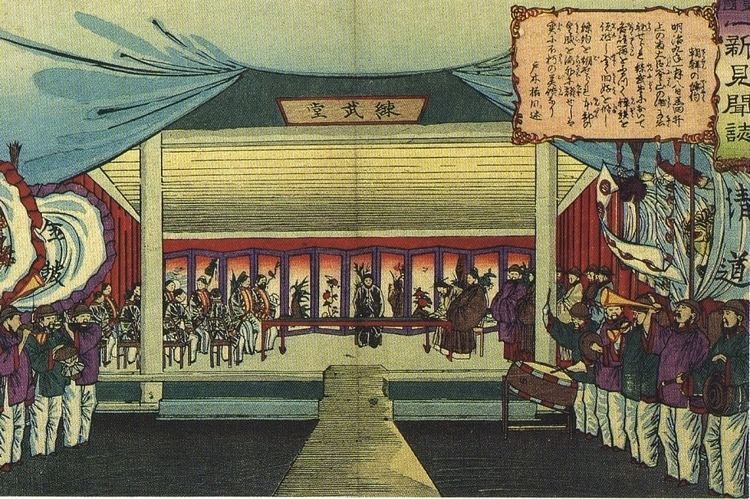Kanji 日朝修好条規 Revised Hepburn Nitchō-shūkōjōki Hanja 江華島條約 | Hiragana にっちょうしゅうこうじょうき Hangul 강화도 조약 Revised Romanization Ganghwado Joyak | |
 | ||
The Japan–Korea Treaty of 1876, also known as the The Japan-Korea Treaty of Amity in Japanese or Treaty of Ganghwa Island in Korean, was made between representatives of the Empire of Japan and the Joseon Kingdom in 1876. Negotiations were concluded on February 26, 1876.
Contents
Background
After the Industrial Revolution in the 18th century, European nations began to colonize many other nations in Africa and Asia under the political ideology known as Imperialism. Almost all of Africa was colonized by European Powers; most of Central, South and Southeast Asia including India were taken over by various European nations. East Asia also was invaded by foreign powers, beginning with the First Opium War (1839–1842) and Second Opium War (1856–1860) against China fought by Britain and other western powers; China's empire was reduced to a half-colonized territory. Meanwhile, the American Asiatic Squadron under the leadership of Matthew C. Perry forced Japan to open its ports to the western world in 1854.
Humiliated by unequal treaties and the prospect of losing its independence and integrity to imperialist powers, Japan embarked on a rapid transformation, successfully turning itself from a medieval society into a modern industrialized state.
Ganghwa incident
In Korea, the strong dictatorship of Heungseon Daewongun was overthrown by Queen Min, who instituted a policy of closing doors to European powers. France and United States had already made several unsuccessful attempts to begin commerce with the Joseon dynasty, all of them happening during Heungseon Daewongun's era. However, after he was removed from power, many new officials who supported the idea of opening commerce with foreigners took power. While there was political instability, Japan developed a plan to open and exert influence on Korea before a European power could. In 1875, their plan was put into action: the Un'yō, a small Japanese warship under the command of Inoue Yoshika, was dispatched to survey coastal waters without Korean permission.
Treaty provisions
Japan employed gunboat diplomacy to press Korea to sign this unequal treaty. The pact opened up Korea, as Commodore Matthew Perry's fleet of Black Ships had opened up Japan in 1853. According to the treaty, it ended Joseon's status as a tributary state of Qing dynasty and opened three ports to Japanese trade. The Treaty also granted Japanese many of the same rights in Korea that Westerners enjoyed in Japan, such as extraterritoriality.
The chief treaty negotiators were Kuroda Kiyotaka, Governor of Hokkaidō, and Shin Heon, General/Minister of Joseon-dynasty Korea.
The articles of the treaty were as follows:
In addition to the open port of Pusan, Article 5 authorized the search in Kyongsang, Kyonggi, Chungchong, Cholla, and Hamgyung Provinces for two more suitable seaports for Japanese trade to be opened in October 1877.
Aftermath
The following year saw a Japanese fleet led by Special Envoy Kuroda Kiyotaka coming over to Korea, demanding an apology from the Joseon government and a commercial treaty between the two nations. The Korean government decided to accept the demand, in hope of importing some technologies to defend the country from any future invasions.
However, the treaty would eventually turn out to be the first of many unequal treaties signed by Korea; It gave extraterritorial rights to Japanese citizens in Korea, and forced the Korean government to open 3 ports to Japan, specifically Busan, Incheon and Wonsan. With the signing of its first unequal treaty, Korea became vulnerable to the influence of imperialistic powers; and later the treaty led Korea to be annexed by Japan.
